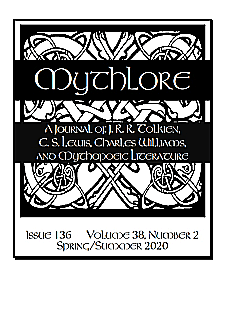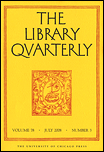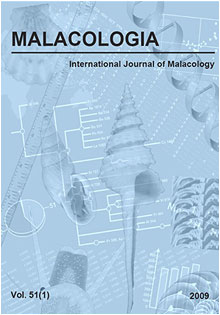
In academic publishing, a scientific journal is a periodical publication designed to further the progress of science by disseminating new research findings to the scientific community. These journals serve as a platform for researchers, scholars, and scientists to share their latest discoveries, insights, and methodologies across a multitude of scientific disciplines. Unlike professional or trade magazines, scientific journals are characterized by their rigorous peer review process, which aims to ensure the validity, reliability, and quality of the published content. With origins dating back to the 17th century, the publication of scientific journals has evolved significantly, playing a pivotal role in the advancement of scientific knowledge, fostering academic discourse, and facilitating collaboration within the scientific community.

Malacology is the branch of invertebrate zoology that deals with the study of the Mollusca, the second-largest phylum of animals in terms of described species after the arthropods. Mollusks include snails and slugs, clams, and cephalopods, along with numerous other kinds, many of which have shells. Malacology derives from Ancient Greek μαλακός (malakós) 'soft' and -λογία (-logía).

Samuel Stillman Berry was an American marine zoologist who specialized in cephalopods.

Muricidae is a large and varied taxonomic family of small to large predatory sea snails, marine gastropod mollusks, commonly known as murex snails or rock snails. With over 1,700 living species, the Muricidae represent almost 10% of the Neogastropoda. Additionally, 1,200 fossil species have been recognized. Numerous subfamilies are recognized, although experts disagree about the subfamily divisions and the definitions of the genera. Many muricids have unusual shells which are considered attractive by shell collectors and by interior designers.

Mythlore is a biannual peer-reviewed academic journal founded by Glen GoodKnight and published by the Mythopoeic Society. Although it publishes articles that explore the genres of myth and fantasy in general, special attention is given to the three most prominent members of the Inklings: J. R. R. Tolkien, C. S. Lewis, and Charles Williams. The current editor-in-chief is the Tolkien scholar Janet Brennan Croft. The Tolkien Society describes Mythlore as a "refereed scholarly journal".

The Library Quarterly is a quarterly double-anonymous peer-reviewed academic journal covering library science, including historical, sociological, statistical, bibliographical, managerial, psychological, and educational aspects of the field. It is published by the University of Chicago and was established to fill a need for investigation and discussion set forth by the American Library Association in 1926. The editors are Paul T. Jaeger and Natalie Greene Taylor, with associate editors Jane Garner and Shannon M. Oltmann.
Robert Tucker Abbott was an American conchologist (seashells) and malacologist (molluscs). He was the author of more than 30 books on malacology, which have been translated into many languages.
The Contemporary Review is a British biannual, formerly quarterly, magazine. It has an uncertain future as of 2013.
The Journal of Cell Science is a peer-reviewed scientific journal in the field of cell biology. The journal is published by The Company of Biologists. The journal is partnered with Publons, is part of the Review Commons initiative and has two-way integration with bioRxiv. Journal of Cell Science is a hybrid journal and publishes 24 issues a year. Content over 6 months old is free to read.

Malacologia is a peer-reviewed scientific journal in the field of malacology, the study of mollusks. The journal publishes articles in the fields of molluscan systematics, ecology, population ecology, genetics, molecular genetics, evolution, and phylogenetics. The editor-in-chief is Charles Lydeard.

Pteropurpura festiva, commonly known as the festive murex, is a species of predatory sea snail, a marine gastropod mollusk in the family Muricidae, the rock snails. Native to the Eastern Pacific, these sea snails grow to 34–67 mm in length.
Hispania is a peer-reviewed academic journal and the official journal of the American Association of Teachers of Spanish and Portuguese. It is published quarterly by the AATSP and covers Spanish and Portuguese literature, linguistics, and pedagogy. Hispania publishes in literature, linguistics, and pedagogy having to do with Portuguese- and Spanish-speaking communities, as well as book/media reviews, which are subdivided into Pan-Hispanic/Luso-Brazilian Literary and Cultural Studies, linguistics, language, media, and fiction and film.

Philippe Bouchet is a French biologist whose primary scientific fields of study are malacology and taxonomy. He works at the Muséum National d'Histoire Naturelle in Paris. He is also a Commissioner of the International Commission on Zoological Nomenclature.
Oceanography is a quarterly peer-reviewed scientific journal that publishes articles about ocean science and its applications. It is published by The Oceanography Society, a nonprofit professional society based in the United States.

The Nautilus is a peer-reviewed scientific journal covering research in malacology. Hence its scope includes all aspects of the biology, ecology, and systematics of mollusks.
The Florida Historical Quarterly is an American academic journal, published four times a year by the Florida Historical Society.
The Nederlandse Malacologische Vereniging (NMV), known in English as the Netherlands Malacological Society or the Dutch Malacological Society, is a non-profit organisation based in the Netherlands. It is a society devoted to malacology as well as conchology. The NMV was founded in 1934 whichd include both professionals and amateurs members. The NMV created a European malacological society which later became the global society Unitas Malacologica.

Miscellanea Malacologica is a peer-reviewed scientific journal covering malacology, specifically papers on the taxonomy, nomenclature, and zoogeography of mollusks. The journal is published by Marien Faber and was established in 2004.

The Registry of World Record Size Shells is a conchological work listing the largest verified shell specimens of various marine molluscan taxa. A successor to the earlier World Size Records of Robert J. L. Wagner and R. Tucker Abbott, it has been published on a semi-regular basis since 1997, changing ownership and publisher a number of times. Originally planned for release every two years, new editions are now published annually. Since 2008 the entire registry has been available online in the form of a searchable database. The registry is continuously expanded and now contains more than 25,000 listings and 85,000 supporting images.
Folia Malacologica is a peer-reviewed scientific journal publishing in the field of malacology, it is published quarterly and covers all aspects of malacology.












